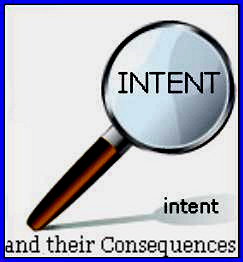
Estate of Palmer 2017 BCSC 1430 dealt with an application by affidavits pursuant to Sections 58 and 59 WESA to cure deficiencies in a will left by a deceased who hand wrote certain changes to a typed and properly witnessed prior will.
The Judge referred the matter to the trial list under a rule 22-1-(7) (d) finding that there was a triable issue, particularly concerning her competence.
WESA and the Determination of Testamentary Intentions
[27] The recent case of Estate of Young, 2015 BCSC 182, describes the legal framework applicable to s. 58 of WESA and the curing of “deficiencies” related to the making or alteration of a will. The history and intent of the legislation, including the case law in other jurisdictions addressing similar provisions, is set out in paras. 16–33 of that decision and will not be repeated here. The law is summarized in paras. 34–37 of the decision and can be paraphrased as follows:
- the courts’ curative power with respect to non-compliant testamentary documents is inevitably and intensely fact-sensitive;
- the first threshold issue is whether the document in question is authentic;
- the second, and core, issue is whether the non-compliant document represents the deceased’s testamentary intentions;
- a testamentary intention means much more than the expression of how a person would like his or her property to be disposed of after death. Rather, the document must record a deliberate or fixed and final expression of intention as to the disposal of the deceased’s property on death;
- the burden of proof that a non-compliant document embodies the deceased’s testamentary intentions is the balance of probabilities;
- factors relevant to establishing the existence of a fixed and final testamentary intention may include the presence of the deceased’s signature, the deceased’s handwriting, witness signatures, revocation of previous wills, funeral arrangements, specific bequests and the title of the document; and
- generally speaking, the further a document departs from the formal validity requirements of the legislation, the harder it may be for the court to find that it embodies the deceased’s testamentary intention.
[28] Both s. 58 and 59 of WESA provide for an “application” to court to determine whether a certain document represents the testamentary intentions of a deceased person and/or rectification is warranted because the will fails to implement the deceased’s intent.
[29] Rules 2-1(2)(b) and (2.1) of the Supreme Court Civil Rules provide for the initiation of proceedings in estate matters or in respect of any application authorized by statute to be made to the court. It is possible that the manner in which the present application has been brought does not properly comply with those rules but, in any event, there is no doubt that a chambers hearing is ultimately contemplated thereby triggering the application of Rule 22-1, including the following sub-rules:
Evidence on an application
(4) On a chambers proceeding, evidence must be given by affidavit, but the court may
(a) order the attendance for cross-examination of the person who swore or affirmed the affidavit, either before the court or before another person as the court directs,
(b) order the examination of a party or witness, either before the court or before another person as the court directs,
(c) give directions required for the discovery, inspection or production of a document or copy of that document,
(d) order an inquiry, assessment or accounting under Rule 18-1, and
(e) receive other forms of evidence.
…
Power of the court
(7) Without limiting subrule (4), on the hearing of a chambers proceeding, the court may
(a) grant or refuse the relief claimed in whole or in part, or dispose of any question arising on the chambers proceeding,
(b) adjourn the chambers proceeding from time to time, either to a particular date or generally, and when the chambers proceeding is adjourned generally a party of record may set it down on 3 days’ notice for further hearing,
(c) obtain the assistance of one or more experts, in which case Rule 11-5 applies, and
(d) order a trial of the chambers proceeding, either generally or on an issue, and order pleadings to be filed and, in that event, give directions for the conduct of the trial and of pre-trial proceedings and for the disposition of the chambers proceeding.




